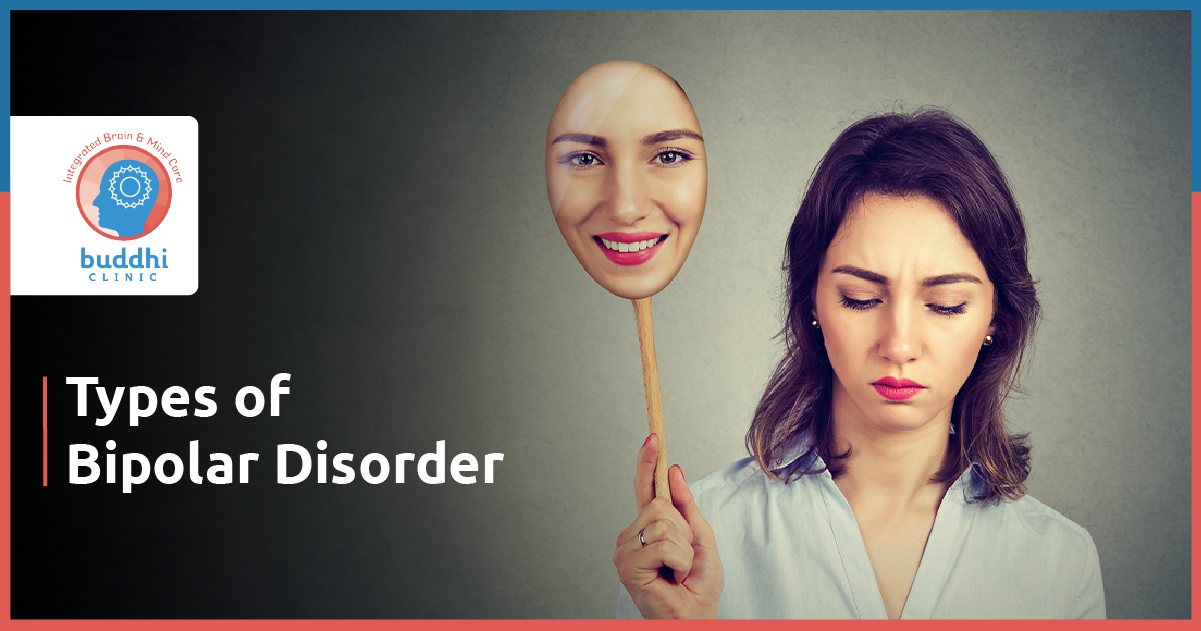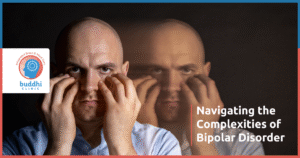Bipolar disorder, formerly known as manic-depressive illness, is a mental health condition characterized by extreme mood swings that include emotional highs (mania or hypomania) and lows (depression). These mood swings can affect sleep, energy, activity, and daily functioning. Understanding the different types of bipolar disorder is crucial for proper diagnosis and treatment, as each type presents unique challenges and symptoms.
What is Bipolar Disorder?
Bipolar disorder is a chronic mental health condition that involves unusual shifts in mood, energy, activity levels, and concentration. These shifts can significantly impact one’s quality of life and make it difficult to carry out day-to-day tasks. There are three main types of bipolar disorder, each defined by the presence, type, frequency, and intensity of mood episodes. Additionally, there are other specified and unspecified bipolar and related disorders that do not fit neatly into these categories.
Types of Bipolar Disorder
Bipolar I Disorder
Bipolar I Disorder is characterized by at least one manic episode, which may be preceded or followed by hypomanic or major depressive episodes. Manic episodes involve elevated or irritable mood, increased activity or energy levels, and may include a range of symptoms such as:
Extreme Happiness or Euphoria:
Individuals may feel overly joyous or elated.
Increased Energy and Activity Levels:
There is a significant boost in energy, making the person feel restless or agitated.
Reduced Need for Sleep:
Despite sleeping very little, individuals do not feel tired.
Grandiosity:
An inflated self-esteem or sense of superiority.
Rapid Speech and Racing Thoughts:
Individuals may talk very fast and jump from one idea to another.
Impulsive or Risky Behaviours:
Engaging in activities that have a high potential for negative consequences, such as reckless driving or spending sprees.
Depressive episodes in Bipolar I Disorder can include symptoms such as sadness, hopelessness, loss of interest in activities, fatigue, and suicidal thoughts. The severity of these mood swings can lead to significant impairments in daily functioning.
Bipolar II Disorder
Bipolar II Disorder involves at least one hypomanic episode and one major depressive episode. Hypomanic episodes are similar to manic episodes but less severe and do not cause as much impairment in social or occupational functioning. Symptoms of hypomania include:
Elevated or Irritable Mood
Feeling unusually happy or irritable.
Increased Energy and Activity Levels
Similar to mania, but the symptoms are less intense.
Talkativeness
Speaking more than usual or feeling the pressure to keep talking.
Decreased Need for Sleep
Sleeping less without feeling tired.
Distractibility
Difficulty focusing on one task at a time.
Depressive episodes in Bipolar II Disorder are similar to those in Bipolar I, with symptoms such as persistent sadness, loss of interest in pleasurable activities, and feelings of guilt or worthlessness. Although hypomanic episodes are less severe than manic episodes, the depressive episodes in Bipolar II Disorder can be just as debilitating.
Cyclothymic Disorder (Cyclothymia)
Cyclothymic Disorder is characterised by chronic, fluctuating mood disturbances involving numerous periods of hypomanic symptoms and periods of depressive symptoms that do not meet the criteria for a hypomanic episode or major depressive episode. These symptoms persist for at least two years (one year in children and adolescents) and can include:
Frequent Mood Swings
Shifts in mood from high to low without severe extremes.
Subclinical Symptoms
Symptoms that are less severe than those of full-blown hypomanic or depressive episodes.
Persistent Symptoms
The mood disturbances occur more often than not over the two-year period, causing significant distress or impairment.
While the symptoms of Cyclothymic Disorder are milder than those of Bipolar I and II Disorders, they can still cause significant distress and impairment, affecting daily functioning and quality of life.
Other Specified and Unspecified Bipolar and Related Disorders
Some individuals experience symptoms of bipolar disorder that do not fit neatly into the categories of Bipolar I, Bipolar II, or Cyclothymic Disorder. These cases are classified as “Other Specified” or “Unspecified” Bipolar and Related Disorders. The symptoms and patterns of these disorders can vary widely, making diagnosis and treatment more challenging. They may include:
Atypical Symptoms
Symptoms that do not fully meet the criteria for any specific bipolar disorder.
Short-Duration Hypomanic Episodes
Hypomanic episodes that last less than the required four days for Bipolar II Disorder.
Episodes with Insufficient Severity or Frequency
Manic or depressive episodes that are not severe or frequent enough to meet the criteria for Bipolar I or II Disorders.
Symptoms of Bipolar Disorder
Manic Symptoms
- Extreme Happiness or Euphoria: An overly joyous or elevated mood.
- Increased Energy and Activity Levels: Significant boost in energy, often leading to restlessness or agitation.
- Reduced Need for Sleep: Feeling rested after only a few hours of sleep.
- Grandiosity: Inflated self-esteem or a sense of superiority.
- Rapid Speech and Racing Thoughts: Talking very fast and jumping from one idea to another.
- Impulsive or Risky Behaviours: Engaging in activities with a high potential for negative consequences.
Depressive Symptoms
- Sadness and Crying: Persistent feelings of sadness and frequent crying.
- Feelings of Hopelessness, Worthlessness, and Guilt: Negative thoughts and emotions that affect self-esteem.
- Loss of Energy and Interest in Activities: Fatigue and lack of motivation to engage in previously enjoyed activities.
- Trouble Concentrating and Making Decisions: Difficulty focusing and making everyday decisions.
- Irritability and Changes in Appetite: Increased irritability and significant changes in eating habits.
- Weight Loss or Gain: Noticeable changes in weight due to altered eating patterns.
- Suicidal Thoughts and Attempts: Thoughts of death or suicide, which require immediate attention.
Mixed Episodes
- Simultaneous Symptoms of Mania and Depression: Experiencing symptoms of both mania and depression at the same time.
- Feelings of Restlessness and Irritability: A combination of high energy and agitation with deep sadness.
Diagnosis and Treatment
Diagnosing bipolar disorder involves a comprehensive evaluation by a mental health professional, including a detailed medical history, a discussion of symptoms, and possibly psychological testing. Accurate diagnosis is essential for effective treatment, which typically includes a combination of medication, psychotherapy, and support services.
- Medications: Medications such as mood stabilizers, antipsychotics, and antidepressants are commonly prescribed to manage symptoms and prevent mood swings.
- Psychotherapy: Cognitive-behavioral therapy (CBT) and interpersonal and social rhythm therapy (IPSRT) are effective therapeutic approaches that help individuals manage symptoms, develop coping strategies, and improve daily functioning.
- Support Services: Support services, including case management, vocational training programs, and peer support groups, provide practical assistance and a sense of community for individuals with bipolar disorder.
Why Choose Buddhi Clinic for Bipolar Disorder?
At Buddhi Clinic, we specialise in neuropsychiatric disorders, offering integrated brain and mind care across all ages. Our comprehensive program combines modern science with holistic approaches, including brain stimulation, psychological therapy, Ayurveda, yoga, cognitive stimulation, naturopathy, and physical, occupational, and speech therapy.
With 15 non-invasive brain stimulators and a multidisciplinary team under one roof, we provide unparalleled care tailored to your unique needs. Choose Buddhi Clinic for a holistic healing experience that nurtures your mind, body, and spirit.
Conclusion
Understanding the different types of bipolar disorder is essential for proper diagnosis and treatment. Each type has its own set of symptoms and patterns, and recognizing these can help individuals receive the appropriate care. If you or someone you know is experiencing symptoms of bipolar disorder, seeking professional help is crucial for effective management and a better quality of life. Early diagnosis and a comprehensive treatment plan, including medication, psychotherapy, and support services, can significantly improve outcomes and help individuals lead fulfilling and productive lives.
Experience integrative healing at Buddhi Clinic — now in Chennai, Coimbatore & Indore.
Book your consultation today and begin your journey to better brain and body health!
FAQs
1. Can bipolar disorder be cured?
There is no cure for bipolar disorder, but with appropriate treatment and support, individuals can manage symptoms and lead fulfilling lives.
2. What causes bipolar disorder?
The exact cause is unknown, but contributing factors like Genetics, Brain Structure and Function and Environmental Factors may play a role.
3. Can bipolar disorder go away on its own?
Bipolar disorder is a lifelong condition, but with proper treatment and management, individuals can achieve stability and lead fulfilling lives.
4. What are common triggers for bipolar episodes?
Triggers vary but may include, stressful life events, lack of sleep, substance abuse and medication changes.
5. What lifestyle changes can help manage bipolar disorder?
Regular physical activity, a balanced diet, adequate sleep, stress reduction techniques, and avoiding substances that can worsen symptoms are essential for managing bipolar disorder.





